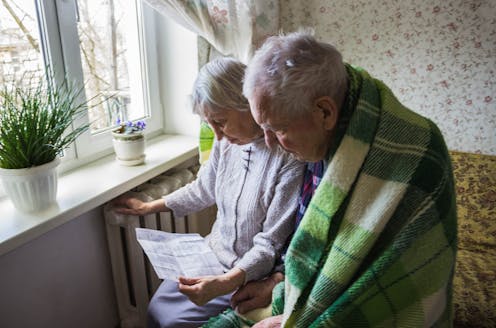what Australia and the European Union can learn from each other
- Written by Sangeetha Chandrashekeran, Senior Research Fellow, Australian Research Council Centre of Excellence for Children and Families over the Life Course, The University of Melbourne

As the transition to clean energy unfolds, some fear the decarbonisation of the electricity sector will mean higher prices. And high prices can lead to energy poverty: when a household cannot afford the essential electricity services needed for a decent standard of living, such as heating.
Our new report, released today, compares approaches to energy affordability in the EU and Australia.
The EU is experiencing an energy price spike due to an increased demand as part of the post-COVID economic recovery and gas supply constraints from Russia. In Australia, wholesale electricity prices reached unprecedented levels in 2018, although they’ve since declined.
We found Australia can learn a lot from the EU about putting policies in place to alleviate energy poverty. We also show that under the right regulatory and market settings, electricity prices can be kept in check as the electricity sector decarbonises.
Apples and oranges?
Why compare a large populous union of member states with Australia? The EU and Australia have important similarities when it comes to the energy sector, such as a vast grid that crosses jurisdictions and shared governance arrangements.
Both are experiencing an influx of renewable energy supply (although this has been more policy-driven in the EU than in Australia). And EU member states, like Australia’s states and territories, are ultimately responsible for energy regulation within their boundaries.
So, coordination and governance of energy involves gaining agreement across jurisdictions.
The EU takes a more co-ordinated and top-down regulatory approach on energy affordability than Australia. While there are lessons we can learn from the EU, there are no cut-and-paste solutions.
What’s driving the cost of electricity?
Well, it’s complex. The introduction of low-cost renewable supply over the last decade has moderated wholesale and retail electricity prices in both Europe and Australia. This is likely to continue in the short to mid-term.
Adding more renewable energy into the grid, however, requires upgrades to the poles and wires that carry the electricity – and this is costly. What’s more, low wholesale prices will encourage the early exit of ageing coal plants, which needs to be managed to avoid price shocks.
Australia can learn from the EU in this regard, where almost all member states – such as France and Germany – have announced plans to phase-out coal. They often set requirements and define closure dates for the plants.
This isn’t yet the norm in Australia, as most recently seen with Origin Energy’s surprise decision to bring forward the closure of Eraring – Australia’s largest coal plant – last week.
The Australian electricity system has more limited interconnection between states compared to most parts of the EU electricity market (although this is starting to change). This means shocks, such as early plant closures, are less easily absorbed in Australia.
Both the EU and Australia are grappling with how to fairly and efficiently distribute the cost of network upgrades across society. This includes in Germany, where electricity stakeholders are discussing how to distribute grid costs equally across the country and not overburden regions with higher renewable generation.
If the upgrades are financed by greater use of the grid, such as with more electric vehicles or heat pumps, this spreads the costs across a broader base.
Energy poverty in Australia
Determining which households spend the most on energy tells us a lot about energy inequality and justice. There are big differences between Australia and Europe.
In Australia, as seen in the graph below, the average household spends a lot less on electricity and heat (2% of a household’s disposable income) than their EU counterpart (6%).





